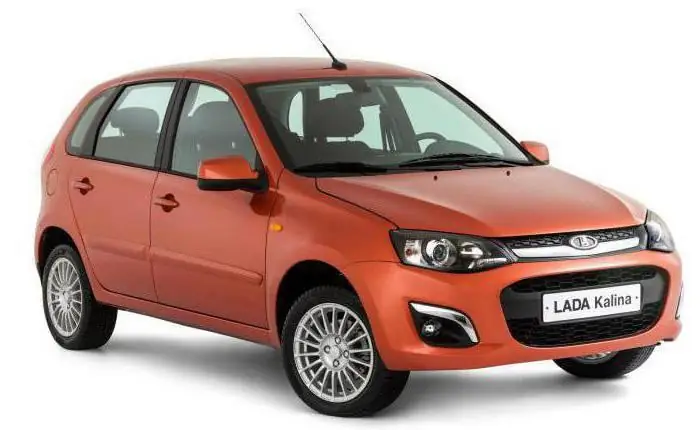2026 Author: Erin Ralphs | [email protected]. Last modified: 2025-01-22 21:14:18
Now among motorists who are interested in the latest AvtoVAZ products, there is a lot of talk about the Lada-Silhouette project. What is this car? This car was first demonstrated at the Moscow Automobile Show back in 2005.

Lada Siluet is a front-wheel drive car presented in three body styles at once: VAZ 2116 - sedan, VAZ 2117 - station wagon, VAZ 2118 - hatchback. Especially for this project, AvtoVAZ designers are developing a completely new front-wheel drive platform. It is planned to install a two-liter gasoline engine on the VAZ 2118, and a diesel power unit and automatic transmission option is also provided. "Lada-Silhouette" is presented as a family car: it has an increased size, an interesting exterior and interior design, high comfort, high-quality materials, enhanced safety. The Silhouette series, including the VAZ 2118 version, is planned to be put into mass production in 2015. Prototype crash tests are currently underway, which show 13 points on a 16 point scale according to the EuroNCAP system.
Initiallyit was planned to put into production the VAZ 2118 and the entire series "Silhouette" back in 2012, but, according to some experts, in connection with the sale of part of AvtoVAZ's shares to the Renault concern, the project was frozen, and then postponed to 2015. This is explained by the fact that representatives of Renault insist on the elimination of the Silhouette so as not to create competition for Renault models. Be that as it may, but at the end of 2009 the project was frozen.

You can understand the French, because Renault has an analogue of the "Silhouette" - this is Fluence. Why should they create a competitor to their car, especially since among the C series there is already a fairly high level of competition. Another reason for stopping the project was the price of VAZ cars of the Silhouette series: 400-450 thousand rubles. The French immediately realized that it would be extremely difficult to compete with such a price. And do not forget about the crisis in the automotive market. Why take financial risks if the logic of a businessman suggests that you need to earn maximum money with minimal costs.
Despite all the political behind-the-scenes games, work on the Silhouette project still continues, albeit not as fast as we would like. AvtoVAZ engineers are considering the possibility of using Renault technologies for the production of models 2116-2118. A presentation of the VAZ 2118 hatchback was held at the AvtoVAZ Research and Development Center. More than 60 changes have been made in this car compared to the sedan. Of the main ones, one can name: the new power unit 2118 with a volume of 1.8 liters and a power of 112 hp. me againgearbox (index 2180) with 5 or 6 gears and a cable shift system. The engine complies with Euro IV and Euro V toxicity standards, has the most reliable start-up at low temperatures. The car has a comfortable interior designed for five people, a powerful ventilation, air conditioning and heating system, which includes blowing and defrosting windows.

Let's hope that AvtoVAZ will still be able to finish work on the Silhouette project, and motorists will be able to purchase these new items by visiting VAZ car dealerships.
Recommended:
ZIL-131 - the legend of the automotive industry

The article provides interesting facts about the real legend of the domestic automobile industry - the ZIL-131 truck
Development of the automotive industry. vintage cars

Development of mechanical engineering - the world and separately the USSR. About the very first cars. Interesting real facts and stories
History of the Soviet automotive industry. Motorized carriage "SZD"

In the history of the domestic automobile industry, interesting cars occupy their niche - motorized carriages. Similar in principle to both cars and motorcycles, they are essentially neither one nor the other
Russian cars: cars, trucks, special purposes. Russian auto industry

The development of the Russian car industry, which in Soviet times became famous thanks to the following cars: Moskvich and Zhiguli, began in the 19th century. Before the emergence of the Union of Republics, the industry got up on its feet several times and immediately fell, and only by 1960 it began to live to the fullest - mass motorization was launched. From the crisis that followed immediately after the collapse of the USSR, with difficulty, but the Russian auto industry got out
The engine on the water is the future of the auto industry

In this article we will look at a technological novelty that has stirred up the world of motorists - an internal combustion engine on water. Today we will talk about who created it, how it happened, and how it is beneficial for modern society

